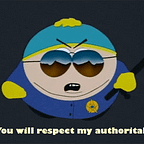Airstrikes in Syria: Who are the bad guys?
Sorting out the players in what may be Gulf War III
U.S. Airstrikes are underway in embattled Syria, while over 130,000 refugees fled to Turkey in recent days. Our government says this may go on for years. But who are we fighting against — the bad guys, right? Which group are they? We hear about ISIS/ISIL, al-Queda, the Assad regime, the opposition forces, the rebels, the Kurds, the Syrian Army, the Islamic Front, and others — a list that is too long cover here fully.
So, who are the bad guys? The brief answer we hear on the evening news is that the U.S., with the support of other arab governments, is attacking the Islamic State of Iraq and Syria aka ISIS (also called ISIL) in both countries, as well as al-Qaeda forces. The primary reasons are that ISIS threatens U.S. interests in Iraq and has been slaughtering other rebels in order to take control. Al-Qaeda and its cell which was just hit by an airstrike was an opportune target due to U.S. intelligence of their imminent threat.
ISIS is just one of the rebel groups opposing the Assad regime, but it has gained great power and is the greatest threat to the regime and to other rebel groups. To add to the confusion, the U.S. threatened airstrikes against the Assad regime just last year, until it stopped using chemical weapons under a plan executed by Russia.
There are over 1000 groups known to oppose the Government aka the Assad regime, according to the BBC, comprising an estimated 100,000 fighters. Their Guide to the Syrian Rebels details the latest groups who have gained power amongst the huge numbers of rebel groups.
To better understand the players, this map indicates who contols what areas of Syria. The major players today are the Assad regime (indicated in pink), ISIS (grey), the Kurds (yellow), and the rest of the rebel groups (green). Challenging the U.S. airstrike strategy is a lack of intelligence in the area and confusion with over a thousand rebel groups fighting for control.
So who are the good guys? Congress approved the training and arming of “moderate” opposition forces aka rebel groups to empower them to fight against ISIS. The politics are murky, and U.S. influence is limited. Who else will these moderates fight? Some rebel group leaders have said they would use training and weapons to fight the Assad regime before it fought ISIS. So the Syrian Army seems to be the default choice for the U.S. for now. It is always going to be a moving target to find the good guys among so many rebel groups with shifting power.
U.S. ally Israel has joined the party to oppose “mutual Muslim enemies,” and has just shot down a Syrian jet, which is beneficial since their archenemy Hezbollah still supports the Assad regime. This complicates the politics when distinguishing the good guys and the bad guys.
Predictably, the map will change and the rebel groups will shift power. The moderate opposition forces will also change over time. ISIS and al-Qaeda are unlikely to be the only “bad guys” going forward.
The U.S. plans to be conducting airstrikes for years in this seemingly unwinnable quagmire. Yet, the effectiveness of strikes is already in doubt. ISIS has warned that the U.S. and its allies are embarking on GULF WAR III. They seem to be right.
